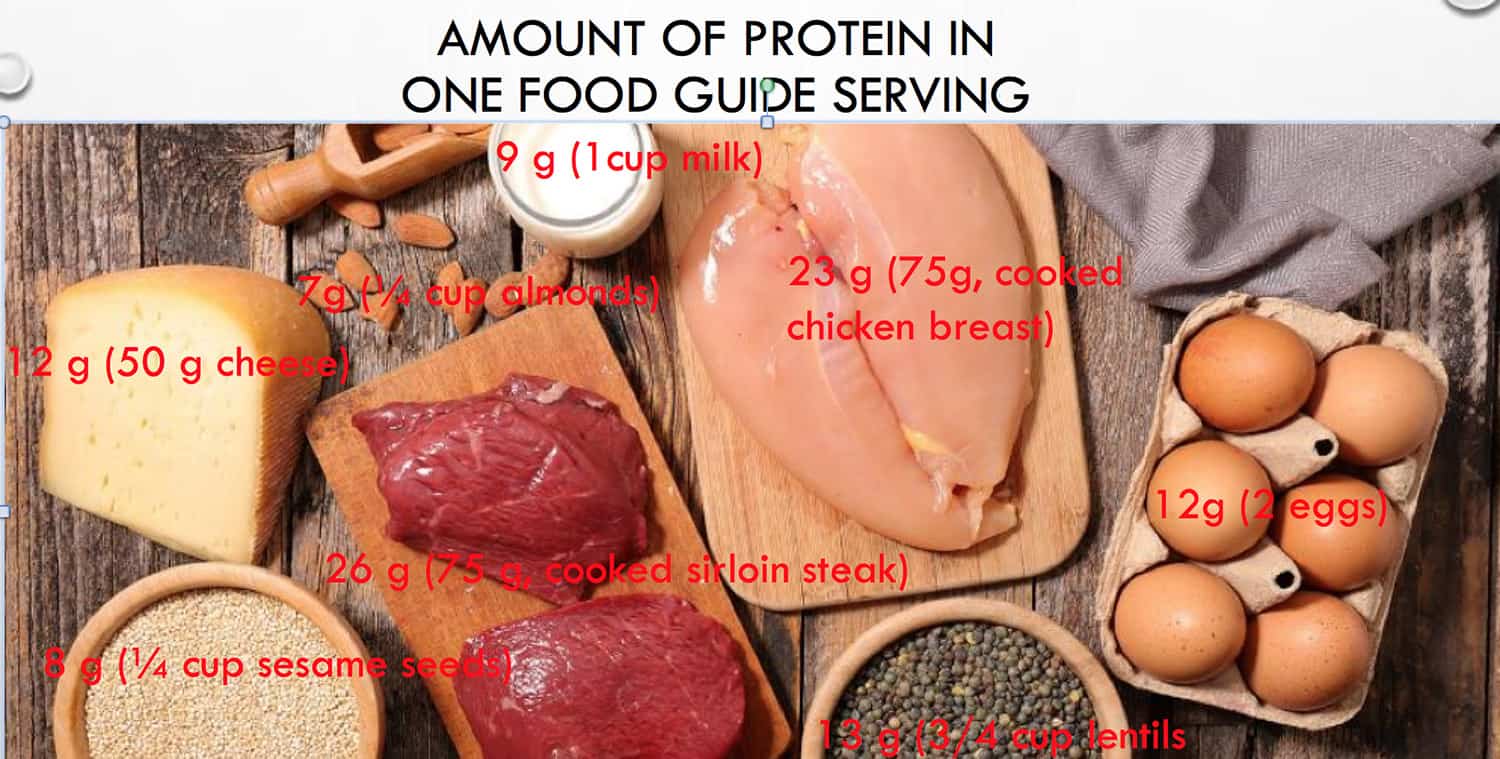WRITTEN BY: CAROL HARRISON, RD

I was part of a three-person panel talking about Protein at the Home Economist Conference in London, Ontario. This blog is a re-cap of a key take away. Doctor Daniel Moore from the University of Toronto covered protein basics for optimizing health across the lifespan and Home Economist, Joyce Parslow with Canada Beef covered food skills because we eat food, not nutrition recommendations!
Well protein may be the hot nutrient Canadians crave, but if the flurry of media attention on protein has left you wondering what’s the best way to get enough protein, you are not alone. Health professionals agree a food first approach is the best approach. Here’s why and how to achieve that. And yes, it may be easier and tastier than you think.
Most consumers (80%) are looking to get their protein from food and drinks that are naturally high in protein.1
As a dietitian, I think that’s great news. For starters, real food tastes far better than supplements, costs less, and is, of course, less processed. The clincher: nutrition science certainly supports a food first approach to getting enough protein.
Whole foods are greater than the sum of their parts.
Consider this. Research shows, for muscle synthesis, it’s better to eat the whole egg versus the egg white alone, even when the total amount of protein is the same.2 Synergy also happens when we eat foods together. Not only do you get an excellent source of protein and iron from beef, but eating beef also enhances nutrition by increasing the iron absorbed from plants by a whopping 150%.3
How to do it: Make your plate ½ veggies or fruit, ¼ quality protein, and ¼ grain.
We don’t only eat protein, so that’s why I like the “healthy plate” advice. When you consider almost half (48%) of women ages 31-50 years and 58% of males ages 14-18 years do not eat the two servings of meat and alternatives per day recommended by Health Canada, and only one in 10 Canadians eats enough veggies and fruit, getting back to basics may seem overly simplistic but makes sense for many of us.4
What proteins are the best?

While animal proteins are a rich source of protein and all for a modest number of calories per serving, for overall health, no single protein source really trumps another. Meat, fish, legumes, poultry, nuts and seeds all come with a unique package of beneficial nutrients, so I say, for optimal nutrition, keep them all on your plate or even mix and match. I love salmon over lentils just as much as a beef and bean burrito.
Cook smart tip: Make an extra steak and use leftovers to make a quick protein-packed meal like a simple beef stir fry, beef and bean chili, or beef and bell pepper quesadillas.
Sources:
- 1. MINTEL RELEASES 2014 US CONSUMER TRENDS. Accessed May 2018.
- van Vilet, S, Shy, EL, et al. Consumption of whole eggs promotes greater stimulation of post exercise muscle protein synthesis than consumption of isonitrogenous amounts of egg whites in young men. American Journal Clinical Nutrition, 106(6):1401-1412, 2017.
- Engelmann, M, Davidsson, L, Sandstrom, B, Walczyk, T, Hurrell, R, & Michaelsen, K. (1998). The influence of meat on nonheme iron absorption in infants. Pediatric Research, 43(6), 768-773.
- Statistics Canada. Canadian Community Health Survey, 2015.
- Canadian Nutrient File, 2018, accessed online: Food Codes: Sesame seeds: 2611, Milk: 61, Chicken breast meat roasted: 842, Colby cheese: 24, Steak/Roasts 6172, Egg: 132, Lentils: 3393.







What about the fact that plant based protein is significantly healthier?
Thank you for your comment back to this article.
Assuming that you are making the comparison of plant based protein to animal food sources, the author of the article (Carol Harrison, R.D.), has a different perspective on the comparisons of proteins.
As a registered dietitian, Carols perspective is noted in the article in this statement: While animal proteins are a rich source of protein and all for a modest number of calories per serving, for overall health, no single protein source really trumps another. Meat, fish, legumes, poultry, nuts and seeds all come with a unique package of beneficial nutrients, so I say, for optimal nutrition, keep them all on your plate or even mix and match.
She cites the unique benefits of different protein sources in more detail in this article she authored for Canadian Food Focus:
https://canadianfoodfocus.org/health/what-is-food-synergy/
Please do get back to us if you have any more questions/concerns on this topic. I hope you find this information helpful and we encourage respectful discussion on this topic.